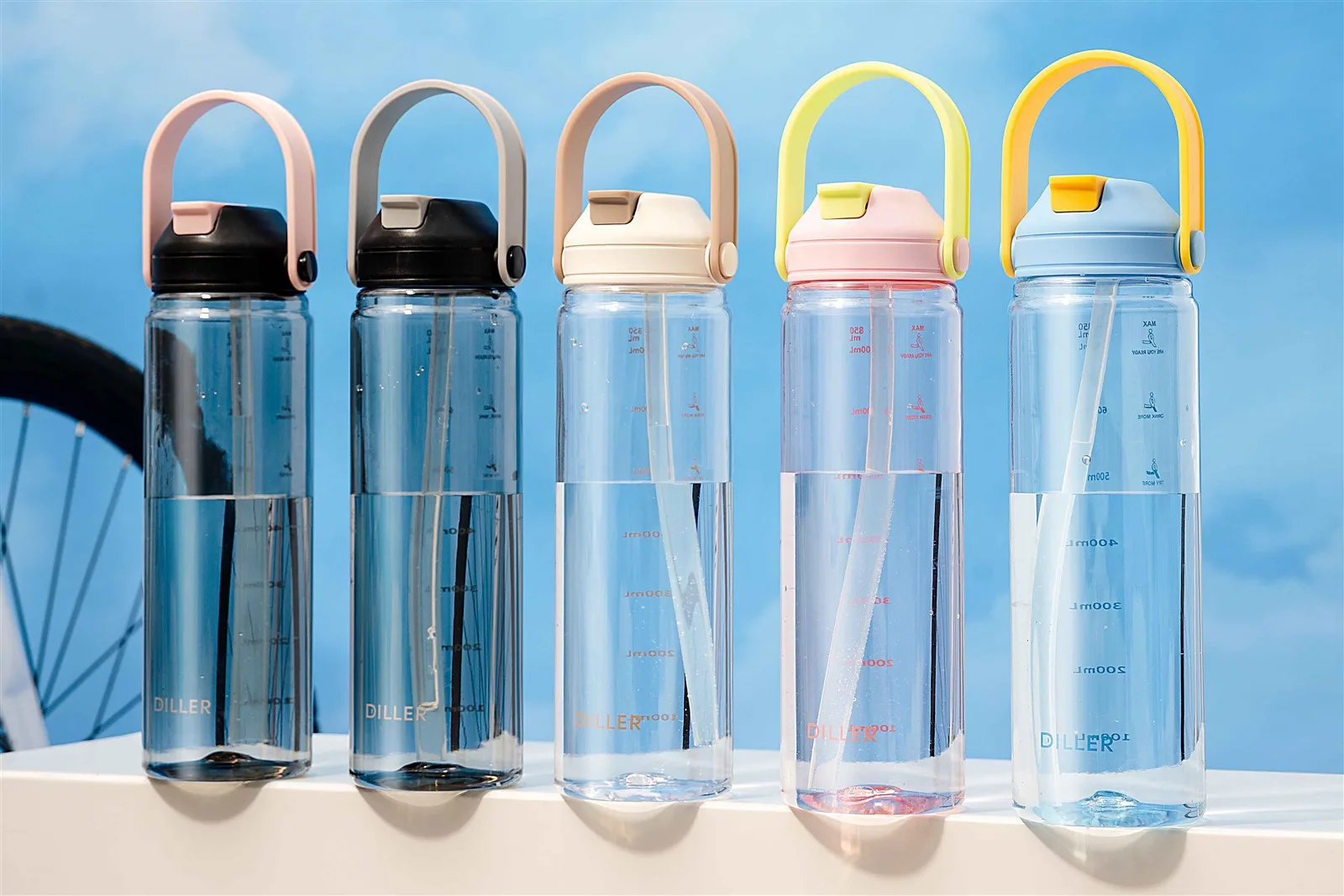Whether running, cycling, training at the gym, or engaging in outdoor activities, maintaining adequate hydration is crucial. To meet the needs of sports enthusiasts, designing a water bottle suitable for exercise is particularly important. These bottles must be easy to carry and feature anti-leak and quick flow functions to ensure convenience and efficiency in hydration during workouts. This article will explore the special design of sports water bottles, including material selection, anti-leak design, quick flow mechanisms, ergonomic design, and more.
I. Material Selection
The materials used in sports water bottles should be lightweight, durable, non-toxic, and environmentally friendly. Below is a comparison of several common materials:
1. Stainless Steel: Stainless steel water bottles are strong and durable, resistant to impact and drops. Additionally, stainless steel is non-toxic and tasteless, ensuring no impact on water quality. It also has good insulation properties, making it suitable for long outdoor activities.
2. Plastic: Plastic water bottles are lightweight and easy to carry. High-quality BPA-free plastic bottles are safer and suitable for short-duration exercises. However, their durability and insulation properties are relatively inferior.
3. Glass: Glass water bottles do not contain harmful substances and maintain the purity of the water. However, their fragility limits their use in sports scenarios. Many glass bottles are equipped with silicone sleeves for enhanced durability.
4. Silicone: Silicone water bottles are soft and foldable, making them easy to carry, suitable for hiking or long-distance travel. However, silicone materials generally have poor insulation performance and are not suitable for holding hot water.
II. Anti-Leak Design
Leak prevention is one of the most crucial aspects of designing sports water bottles, especially during high-intensity exercises or carrying them around. Below are several common anti-leak designs:
1. Screw Lid Design: Screw lids fit tightly to the bottle mouth through threading, effectively preventing water leakage. High-quality screw lids usually come with sealing gaskets to enhance the anti-leak effect further.
2. Push-Button Mechanism: This design features a push-button on the lid, allowing users to open the lid and release the spout with a simple press. This design is convenient for one-handed operation and automatically closes when not in use, preventing leaks.
3. Nozzle Design: Bottles with nozzle typically use silicone nozzle, allowing users to drink by biting on the nozzle. This design is convenient and minimizes leakage, providing quick hydration during exercises.
4. Press-Lock Design: Common in sports bottles, this design includes a press-lock mechanism on the lid, making opening and closing easy. The lock design ensures leak prevention and enhances usability.
III. Quick Flow Mechanisms
Quick hydration is essential during workouts, making the flow mechanism design of water bottles critical. Here are several common quick flow designs:
1. Wide Mouth: A wide mouth design allows smoother water flow, enabling quick drinking. After intense workouts, users can quickly replenish fluids, reducing waiting time.
2. Straw Design: Internal straw designs let users drink without tilting the bottle, suitable for activities like cycling where maintaining posture is essential. This design usually pairs with straws, ensuring smooth water flow.
3. Squeeze Bottle: Often seen in plastic bottles, users can squeeze the bottle body for a rapid water flow, meeting the need for quick hydration. This design is especially useful for running or short breaks during exercises.
4. Press-Flow Design: This design allows users to press a button to release water, making operation simple and controlling water flow to prevent waste. It is suitable for various exercise scenarios, providing quick hydration after high-intensity workouts.
IV. Ergonomic Design
Ergonomic design in sports water bottles is equally crucial, directly affecting user comfort and experience.
1. Ergonomic Bottle Shape: The bottle should be designed to fit comfortably in the hand. Many sports bottles have a streamlined shape with grooves for fingers, making them easy to grip and preventing slips.
2. Anti-Slip Design: To prevent the bottle from slipping during exercises, the exterior often has anti-slip coatings or silicone sleeves. These designs increase friction and improve the bottle’s durability.
3. Weight Distribution: Proper weight distribution avoids the inconvenience of one end being too heavy. Balanced weight distribution enhances carrying comfort, especially during long exercises, reducing fatigue.
4. Portability: Portability is also important. Many sports bottles come with rings or straps, making them easy to carry. Foldable designs save space when not in use, ideal for outdoor activities.
Throughout the design process, it is essential to stay user-oriented, pay attention to details, and continuously optimize to create products that truly meet the needs of sports enthusiasts. Whether in material selection or functionality, every detail must be meticulously crafted to stand out in the market and gain user recognition and trust.


